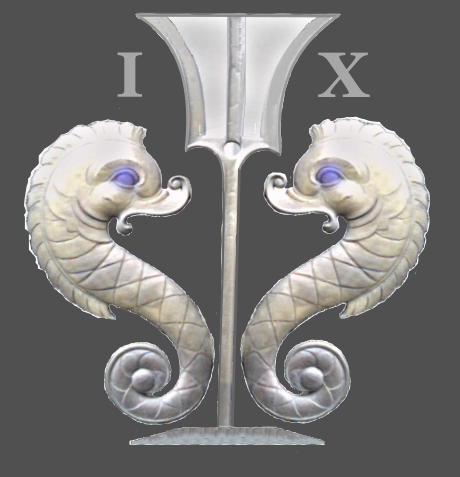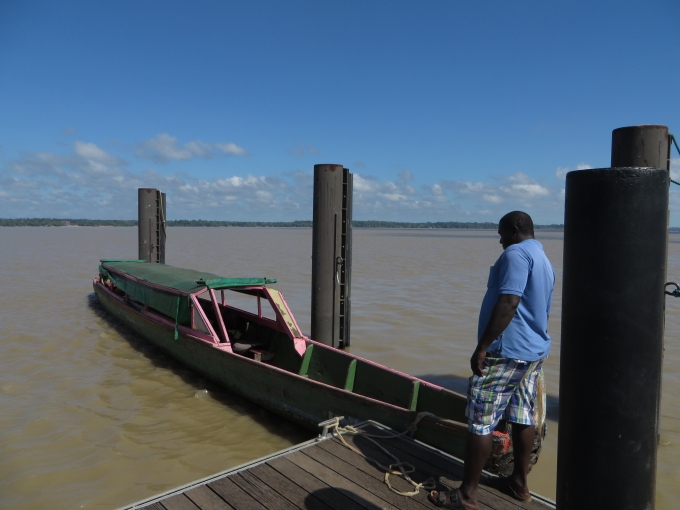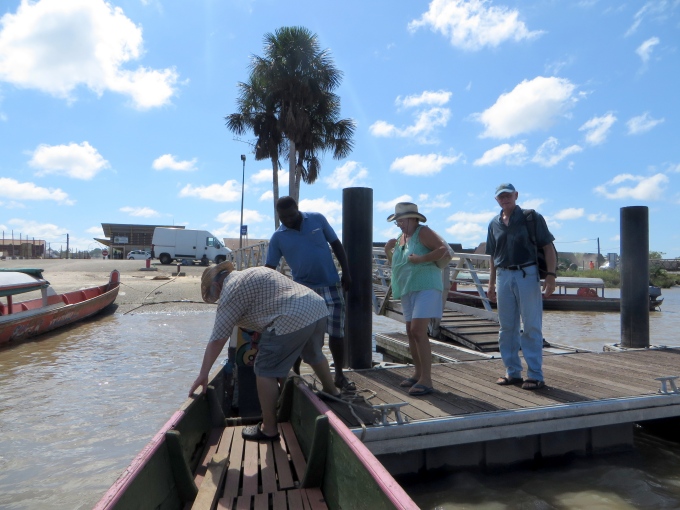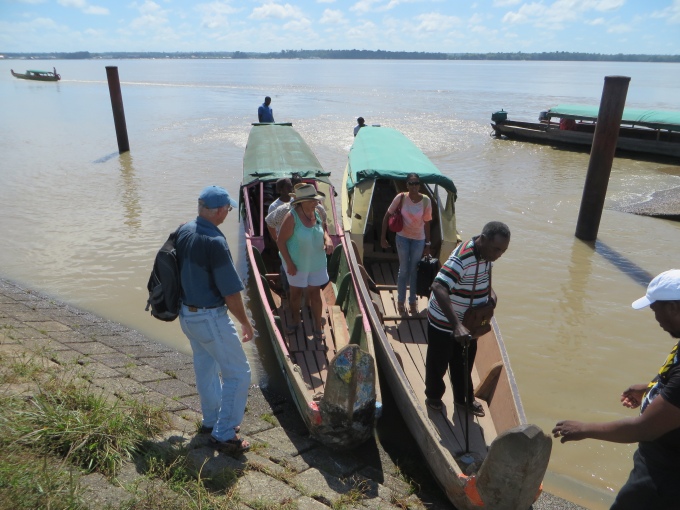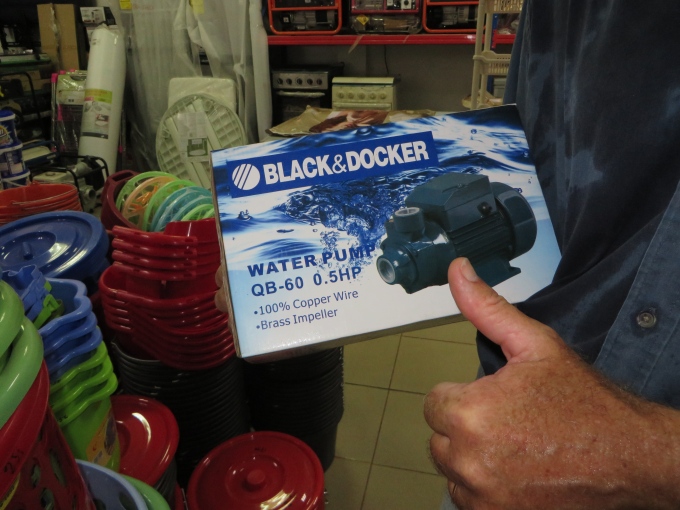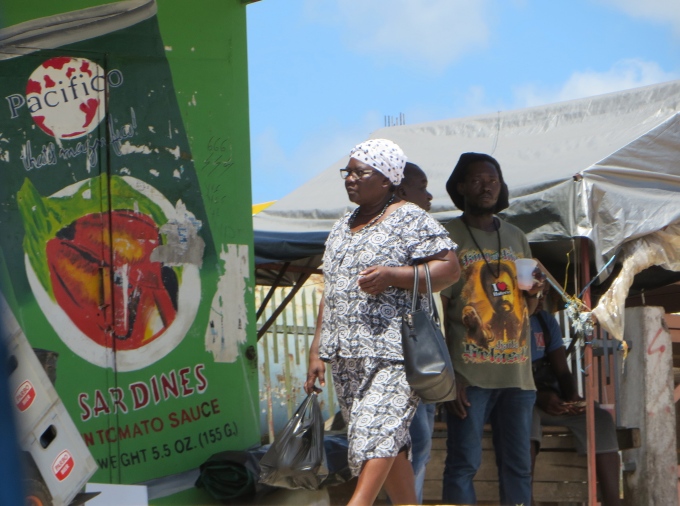A Pirogue Trip to Albina
/The local mode of transportation here on the muddy brown River Maroni is the pirogue. From the Spanish word piragua (by water), we've seen several different types of pirogues in our tavels. They're basically dugout canoes, but they come in many different varieties. Here they're particularly long and narrow and have humongous outboard engines on them to ply them back and forth across the river. Some of the tourist pirogues for taking daytrips up the river are brightly colored, but the regular ones for heading back and forth are workhorses.
We've been looking across the river at Albina, Suriname since we arrived in Saint-Laurent. It's only about 1.5nm across the river, but none of our friends has ventured over there. We were told it wasn't much, although locals go there to shop because the prices are considerably cheaper. There seems to be little issue with Immigration or Customs going back and forth from Suriname to French Guiana as long as you stay within the river towns. So, why not go? A ride in a pirogue plus a peek at Albina.
We walked to the busy pirogue dock and negotiated a price for a one way ride. One was just getting ready to leave and he agreed that €3/pp was fair. I'd say that we “hopped” aboard, but it wasn't quite that easy. The pirogues are long and narrow and thus, quite tippy and unstable. Watching the locals get aboard made it look easy, but we “tourists” were a bit more cautious.
Because it's narrow and low to the water, the inside is quite cramped and close.
Soon the colorful foreshore of Albina came clearly into view. The ride across lasted only 10-15 minutes.
Other pirogues zipped behind us, in front of us, beside us. The drivers are quite adept at maneuvering these long, awkward crafts and we managed to get to the other side unscathed. Unloading was less tricky now that we had the hang of it.
Well, the folks who said Albina wasn't much were absolutely right. The town is pretty much only the riverfront wide. There are some houses scattered behind and along the riverfront. There are taxis and a once-a-day bus to Paramaribo, Suriname's capital city, but that's about it. Fuel is considerably cheaper here, so the fuel dock does a brisk business.
We found no open restaurants other than a few street food vendors. We wandered along the narrow foreshore walk and found a couple of shops in which to poke around.
The shops offered grocery items and a myriad of Chinese-imported goods … like Black & Docker (yes, Docker) tools and Galvin Klain jeans and underwear. We did find a local beer, Parbo … cold and refreshing, despite the fact it was only 10:30 AM!
Finding a ride back was a little trickier, since we wanted to be dropped off at the beach near the dinghy dock. After some negotiation, we agreed upon €15 for all of us. We boarded the pirogue, Pasensi Lobi (Translation: Hot Love), and took off in a flash with the driver's brother at the bow providing slight hand movements to the helmsman to negotiate our path. He evidently needed to make a quick stop at another dock. We sped at full throttle under a low bridge which we thought might have knocked his brother's block off, but our bowman gracefully ducked just in time and was no shorter on the other side of the bridge.
While we waited at the other dock, we got the chance to view life on the foreshore from a slightly different perspective. People came and went with their purchases … just another day in Albina.
We finally got under way again and sped across the river. As we landed at the beach, new fare negotiations began. It seems that the driver had mistakenly quoted us the wrong price. It should have been €20. In all fairness, we had been told the fare was €5/pp to our beach. We smiled, gave him his €20, shook hands and said adieu. After all, the best parts of the trip were the pirogue rides!
Check out a short video on our pirogue trip across the muddy Maroni to Albina.
